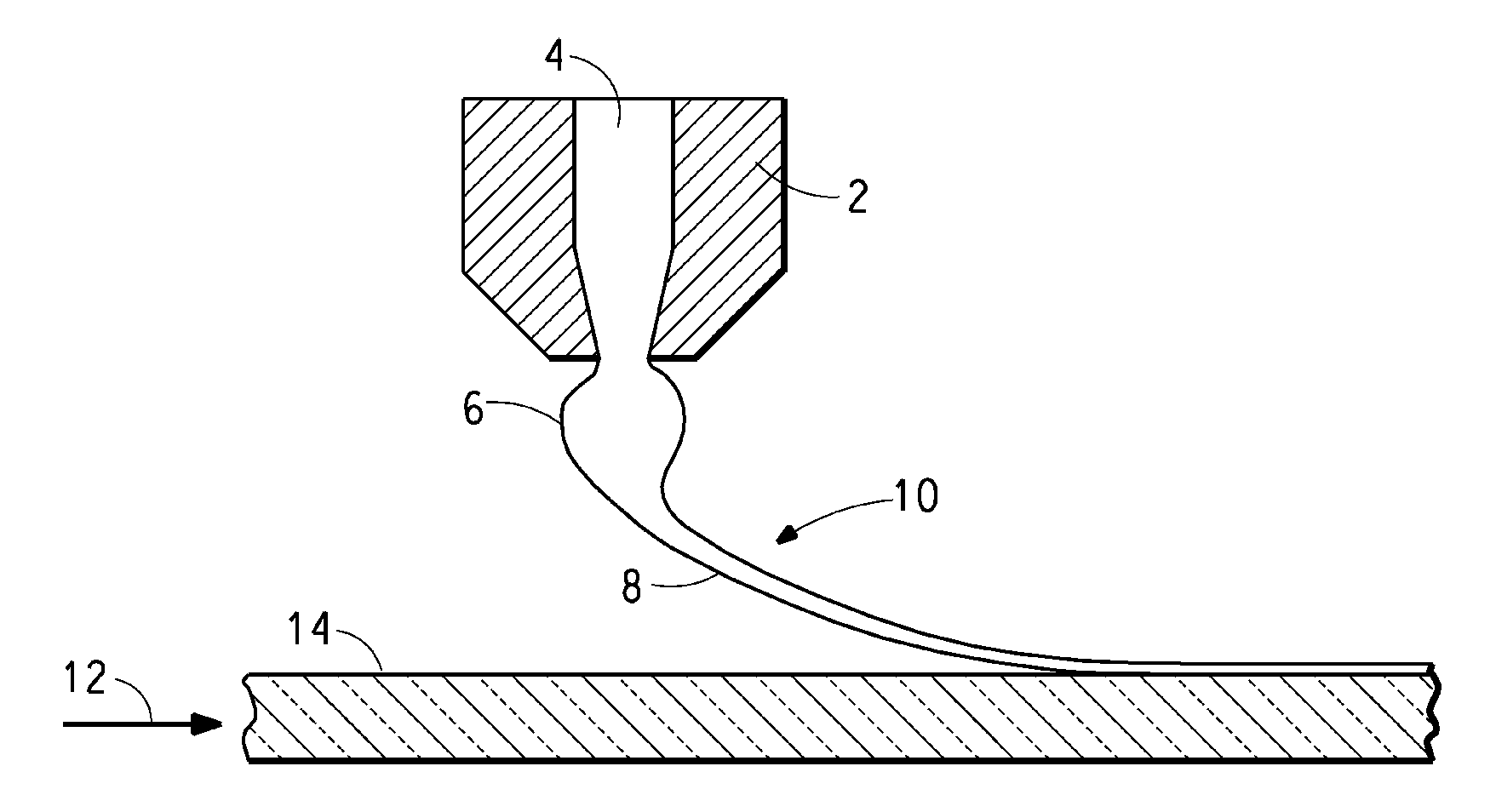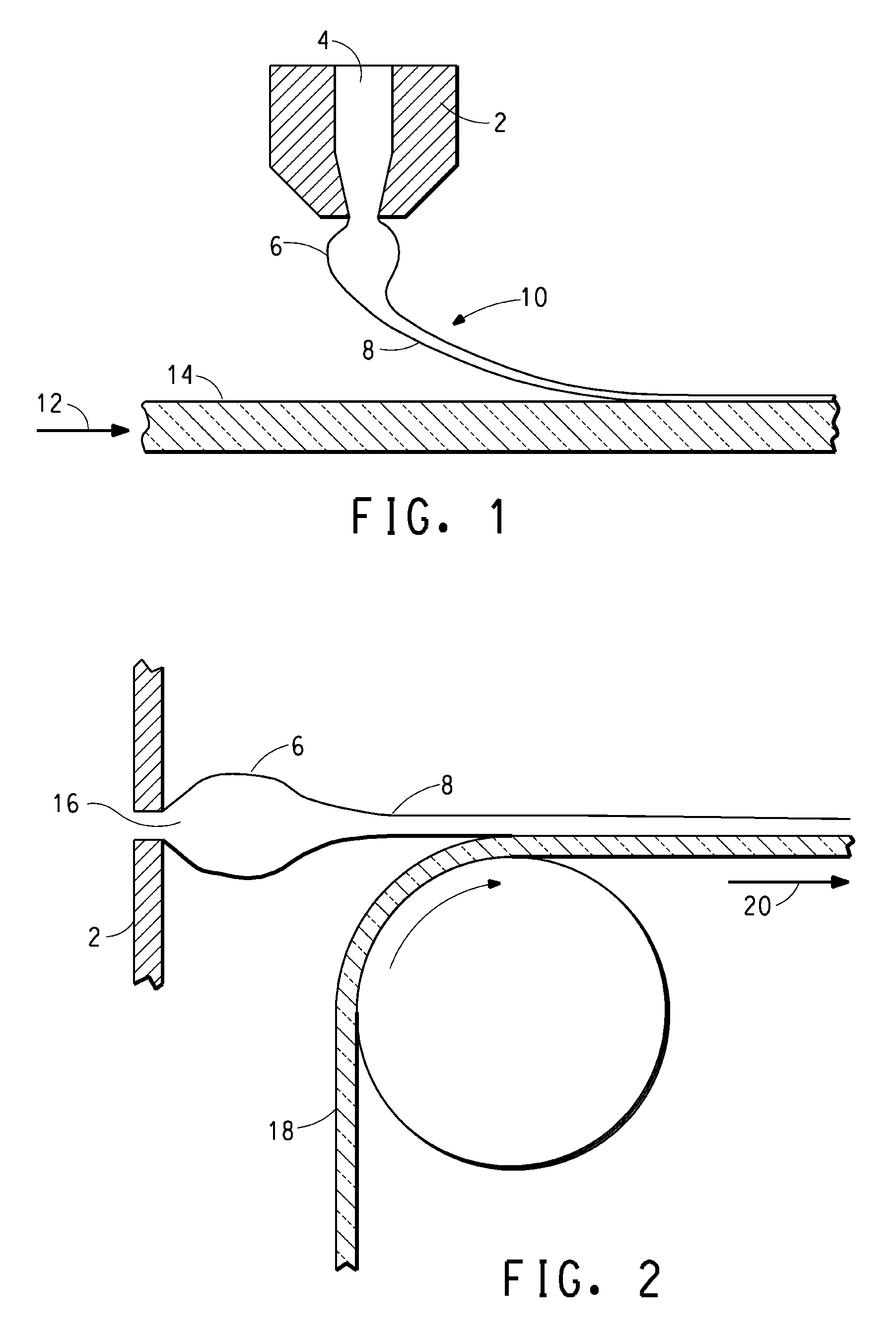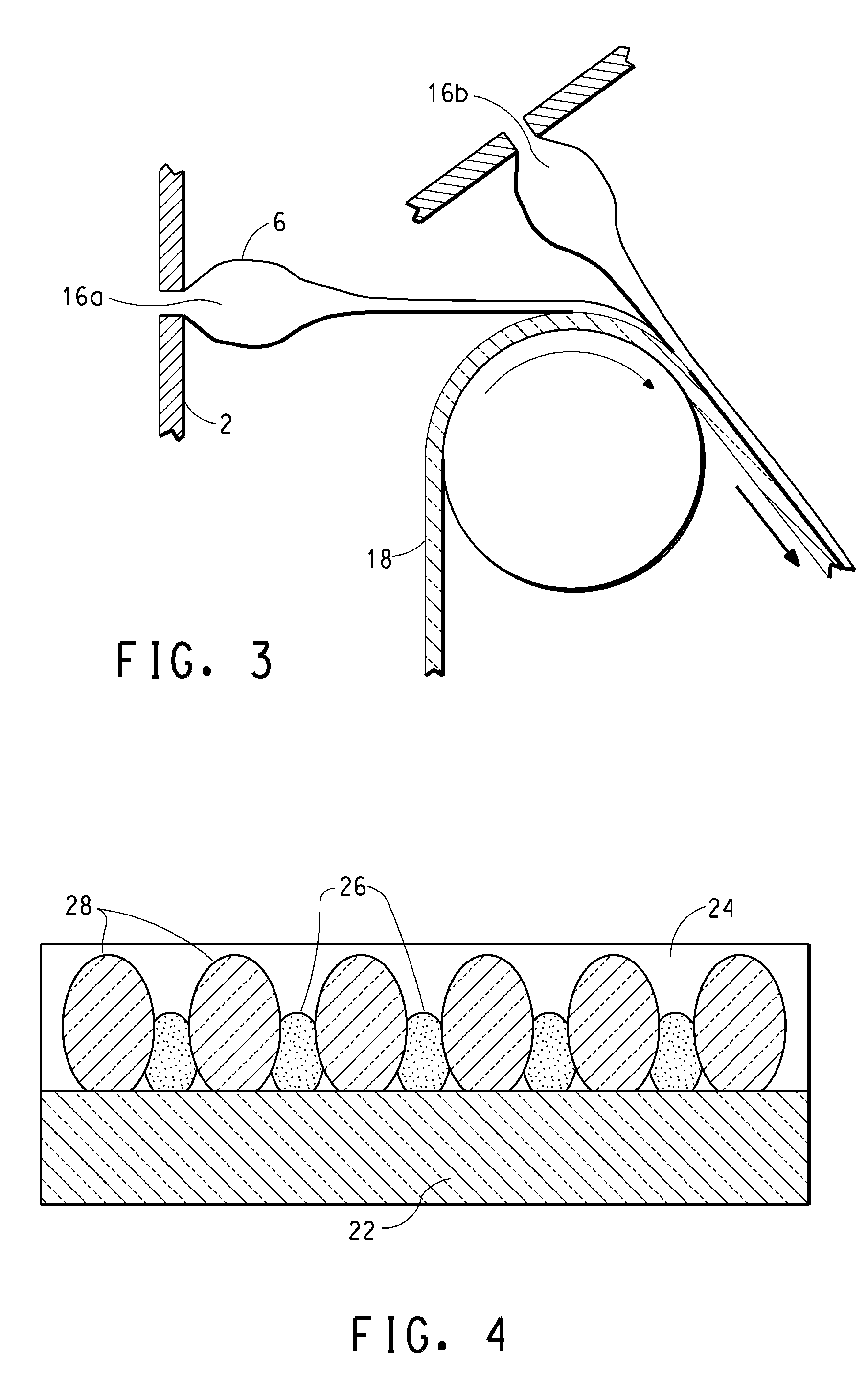Spin-Printing of Electronic and Display Components
a technology of electronic and display components, applied in the direction of synthetic resin layered products, applications, conductors, etc., can solve the problems of clogging of ink jet nozzles, difficult to prepare liquid dispersion in which ultrafine particles are dispersed in a stable manner, and more prone to clogging
- Summary
- Abstract
- Description
- Claims
- Application Information
AI Technical Summary
Benefits of technology
Problems solved by technology
Method used
Image
Examples
example 1
Demonstrating that the Technique Works with Non-Aqueous Systems
[0189]A solution of UHMW polydecene (estimated molecular weight greater than 2,000,000)(2.5 g) in hexane (50 mL) was prepared by cutting the sample of polydecene into small pieces and then placing the jar containing the polymer and solvent onto a roller mill (U.S. Stoneware Corp., Palestine Ohio) set on its lowest speed. Tumbling for 65 hours produced a viscoelastic, relatively homogeneous liquid or gel. The material could easily be drawn into long fibers.
[0190]A sample of Ferro silver (1.0 g, Ferro 7000 ultrafine silver powder, Ferro Corporation, Cleveland, Ohio) was dispersed in hexane (1 mL) in a 25 mL sample vial. A sample of polymer solution (1 mL) was added to the vial. Then an uncapped 1.5 mL vial was added to the sample vial. The capped sample vial was placed in a jar with padding and placed on the roller mill at its slowest speed for 24 hours. The small vial inside the sample vial served as a roller to disperse ...
example 2
Demonstrating that the Technique Works with Conductive Materials in Aqueous Systems
[0193]A sample of UHMW polyethyleneoxide (2 g, Aldrich, Milwaukee, Wis. 18, 947-2, molecular weight about 5,000,000) was dispersed quickly into highly stirred hot water 50 mL) in a jar. The jar containing the UHMW PEO and water was placed onto a roller mill (U.S. Stoneware Corp., Palestine Ohio) set on its lowest speed. Tumbling for 65 hours produced a viscous, relatively homogeneous liquid or gel. The material could easily be drawn into long fibers.
[0194]A sample of Ferro silver (1.0 g) was dispersed in water (1 mL) in a 25 mL sample vial. A sample of polymer solution (1 mL) was added to the vial. Then an uncapped 1.5 mL vial was added to the sample vial. The sample vial was placed in a jar with padding and placed on the roller mill at its slowest speed for 24 hours.
[0195]The sample was transferred to a 1 mL syringes having a needle that had been cut off to a flat tip. Small samples were forced from ...
example 3
Demonstrating that the Technique Works with Complex Additives and Adjuvants
[0197]A sample (10 g) of fully formulated DuPont Fodel® (DC-204) photocurable silver conductor paste (60% silver by weight) was obtained from DuPont Micro Circuit Materials, Wilmington, Del. The major constituents by weight were silver (60%), trimethylpentanediol monoisobutyrate (10%), acrylic resin (6%), modified acrylate ester (3%), glass frit (3%), and other smaller components including isopropanol, diethylthioxanthone, ethyl 4-dimethylaminobenzoate, methyl methacrylate, methacrylic acid, and 2,2-dimethoxy-2-phenylacetophenone. The glass frit is composed of the component weight % of the following: SiO2 (9.1), Al2O3 (1.4), PbO (77.0), B2O3 (12.5). The sample was combined with poly(ethylene oxide) (Aldrich, Milwaukee, Wis. 18, 947-2, molecular weight about 5,000,000), and methanol (0.6 g). The slurry was placed in a 25 mL vial and placed on a roller mill (U.S. Stoneware Corp., Palestine Ohio) at slowest spee...
PUM
| Property | Measurement | Unit |
|---|---|---|
| weight fraction | aaaaa | aaaaa |
| particle size | aaaaa | aaaaa |
| weight fraction | aaaaa | aaaaa |
Abstract
Description
Claims
Application Information
 Login to View More
Login to View More - R&D
- Intellectual Property
- Life Sciences
- Materials
- Tech Scout
- Unparalleled Data Quality
- Higher Quality Content
- 60% Fewer Hallucinations
Browse by: Latest US Patents, China's latest patents, Technical Efficacy Thesaurus, Application Domain, Technology Topic, Popular Technical Reports.
© 2025 PatSnap. All rights reserved.Legal|Privacy policy|Modern Slavery Act Transparency Statement|Sitemap|About US| Contact US: help@patsnap.com



